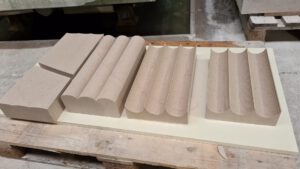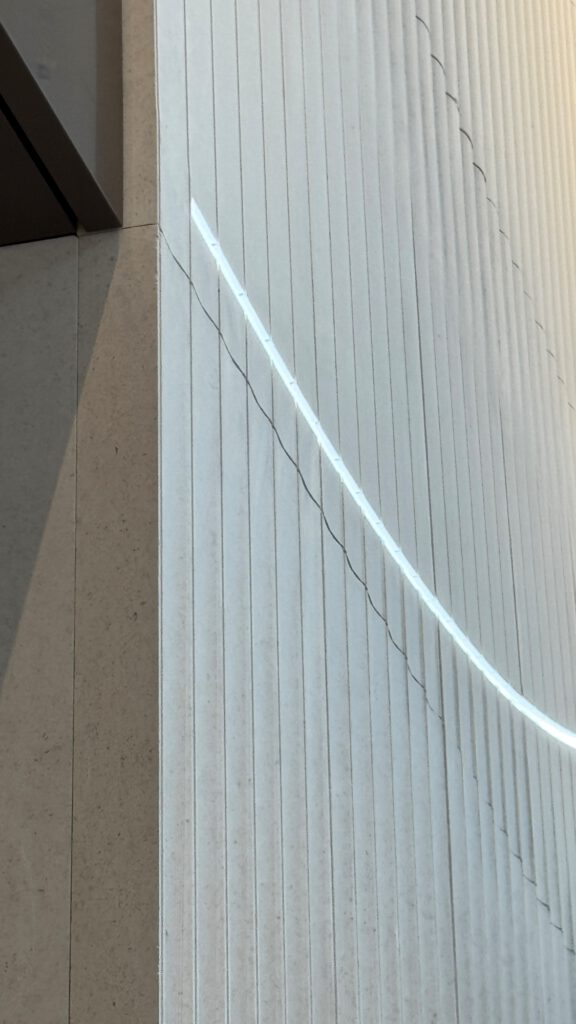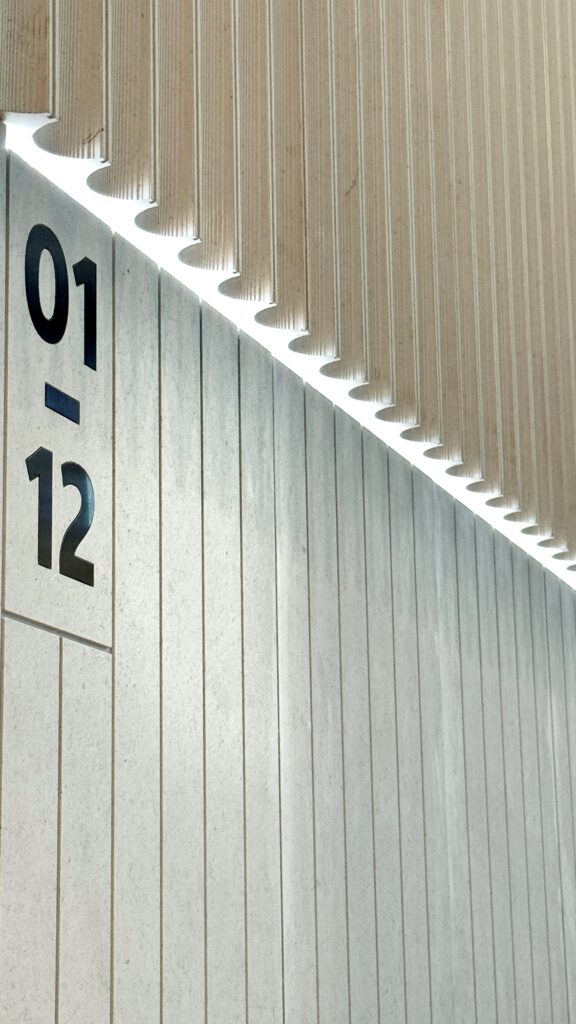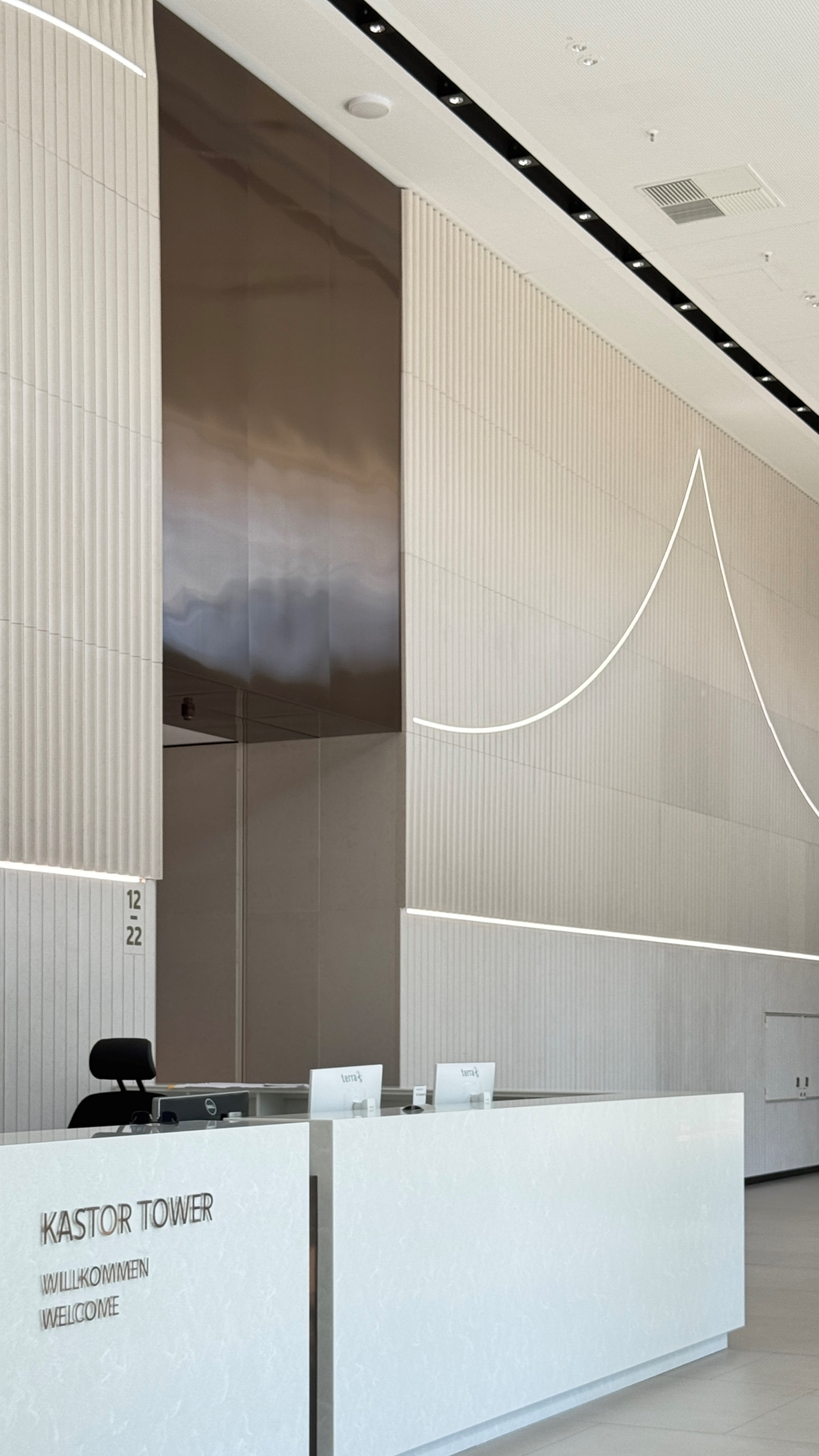The new foyer of the Kastor high-rise building in Frankfurt welcomes visitors with a parametrically designed natural stone sculpture covering the entire wall surface behind the counter. What at first glance looks like a mere rifling reveals itself at second glance to be a paradoxical, extremely sophisticated sculptural design.
The wall sculpture combines the two contrasting fluting styles of ancient columns, which were originally developed by the Phoenicians and the Greeks. Starting concave at the bottom, the elements curve increasingly outward toward the top until they become their opposite, a convex shape.
Widely swinging arcs of light are “engraved” into the strictly vertical orientation of the elements. The arcs are also concave on one side and convex on the other, tracing the shape of the columns. The arcs of light mark the exact point where the concave and convex designs of the individual elements flatten out and meet.
The highly differentiated, smooth transitions posed the greatest challenge for the planning and manufacture of the elements. No two elements are alike. Although it may appear so at first glance, the entire sculpture is not composed of serial elements, but consists of a precise preliminary sketch and its equally precise milling from natural stone across the entire height and width.

The cannelures of the wall sculpture look similar everywhere and are alike nowhere. Thus, one encounters a technically new aesthetic of modern architecture in the object. This object thus embodies a technically new aesthetic of modern architecture. While classical modernism was primarily characterized by the tactile neutralization of flatness, grids, and rows, TEK TO NIK Architects demonstrate with this wall sculpture that the new urban modernism can build on the era of sculptural, visually appealing, and individual facades.



